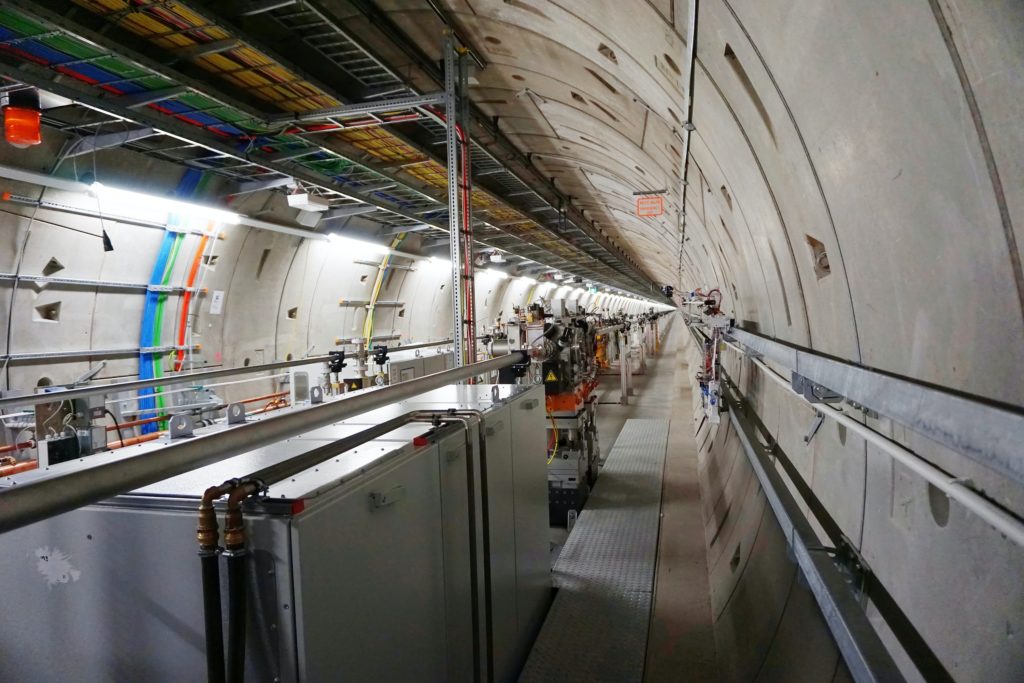Where Can Physics Take Me?
by Giulia C. Cinquegrana
This piece appears in the July 2023 edition of Science Victoria magazine. All issues can be read online for free at rsv.org.au/Science-Victoria.

A class of year nine students can confidently tell you that the mitochondria is the powerhouse of the cell. Chemistry is sometimes a little more intimidating-but most of the population can remember that one great experiment in school where they turned a flame bright pink with potassium. Mention the word physics? From most people, you will get a blank stare and some squirming in their seat.
In 2022, only 10% of the age cohort chose to study VCE physics.1 Only 5% of students that identified as female chose physics. Even though its laws govern our everyday lives, many concepts in physics can be quite alien. The maths is thick – and to add to that complexity – changes depending on whether you are looking at the really small, the really large, or the everyday in between. But the somewhat dry and mathematical picture that students often associate with physics is missing the incredible applications that an understanding of these laws allows us.
After all, physics is simply the study of how the universe works. It teaches us that while the big bang gave us all the hydrogen (and most of the helium) in the universe, the other elements on the periodic table were formed after, in stars.2 Local Victorian physicists are trying to understand why glass is a solid,3 and how we can maximise the information we get from X-rays, whilst minimising the radiation that patients are exposed to.4 Physics teaches us how to measure the collision of two black holes, 36 and 29 times the mass of our sun, the signals of which have been travelling for millions-if not billions-of years.5 And remember, all these discoveries were made by people within that small percentage that took physics and then the smaller percentage that chose to stay with it. The possibilities with a larger cohort are endless, but we need to adjust our approach. To attract more Australian students, we need to show students what they can do with physics.
We – the Victorian Physics Teachers Network (VicPhys), Dr. Sara Webb (Swinburne University), and I – tried to do something about it. Supported by funding from the Victorian Government’s Connecting ‘Learning to Work Project’, Inspiring Victoria Partnership Network scheme (managed by the Royal Society of Victoria), and the Laby Foundation, we interviewed 20+ Australian professionals – that started out with a background in physics – to see what they did with those skills. You can find this resource at wheretowithphysics.org.au.
In this cohort, a basis in high school physics supported our interviewees to pursue research in astrophysics, climate science, particle physics, condensed matter physics, geophysics, psychology, and oceanography. Our first lesson, however, is that studying physics at school does not restrict you to academia. Our other interviewees went into industry, including quantum computing, data science, engineering (software, mechanical, coastal, and civil), medical radiation physics, physiotherapy, and organisational psychology. Some felt a strong desire to support the next generation in teaching and education positions. Armed with a newfound understanding of aerospace engineering, one of our interviewees just wanted to fly, and became a pilot. Some of our interviewees sprinted straight from high school physics to university and academia; some were terrified of physics in school and found science later in life, going back to university as mature age students.
Further than just an extensive collection of achievements, we noticed three primary qualities that our interviewees had in common (and in spades). Creativity, passion, and an incredibly deep curiosity of the world. Importantly, this did not only extend to physics or science. We witnessed their eyes light up as they spoke about their other loves in music, art, and sport, with many of these ‘hobbies’ also professional. These scientists, engineers, teachers, and artists serve as excellent role models to how deeply complex, diverse, and rewarding a career, starting with physics, can be. We hope that students of the next generation can see their future selves in these profiles–we need more people to love (and pursue) physics in this country. After all, we still don’t know what 96% of the universe is made up of.
Giulia Cinquegrana is an astrophysicist and final year PhD candidate at Monash University. Her research focuses on the stellar origins of the periodic table of elements.
—
References:
- Dan O’Keeffe: ‘Participation in VCE Sciences and Maths to 2022’. Using data from VCAA and the Australian Bureau of Statistics (ABS). Education Research – Vicphysics Teachers Network Inc.
- Kobayashi, C., et al. (2020). The origin of elements from carbon to uranium. The Astrophysical Journal, 900(2), 179.
- Liu, A. C., et al. (2022). Local symmetry predictors of mechanical stability in glasses. Science Advances, 8(11).
- Croughan, M. K., et al. (2023). Directional dark-field retrieval with single-grid x-ray imaging. Optics Express, 31(7), 11578- 11597.
- Abbott, B. P., et al. (2016). Observation of gravitational waves from a binary black hole merger. Physical review letters, 116(6), 061102.






